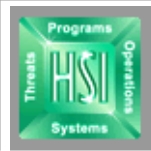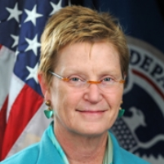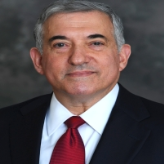S & T Directorate, a division of the Department of Homeland Security, researches, develops, tests and deploys systems and training procedures to detect, prevent, and respond to chemical, biological, radiological, nuclear, and explosive (CBRNE) attacks. It also oversees, hires, and funds other Research and Development (R & D) parties working in the same arena, both inside and outside the government. Currently, there is criticism and concern from several fronts about the way in which S&T Directorate is run, including issues with: its allocation of funding and explanation of budget discrepancies; its relationship with a variety of other research and development organizations, as well as with Congress; and some particular angles, and the scope of, its research.
The Homeland Security Act of 2002, which established the Department of Homeland Security (DHS), created the Directorate for Science and Technology as one of its four divisions, with the intent toprovide a focused, integrated approach to homeland security-related research and development in both the public and private sectors. Additionally, several government programs, or parts of programs, were transferred to The S & T Directorate through the Homeland Security Act of 2002, including programs previously under the Department of Agriculture, Department of Defense, and Department of Energy. But the S & T Directorate was not given a precise statutory mission when it was created, and also had to start from scratch in a hurry on many of its own R&D programs and relationships. As a result, from its launch, it experienced a variety of management, organizational and personnel problems. In 2006 Jay M. Cohen, who had a long and distinguished history with the U.S. Navy, was brought in as Under Secretary, to help restructure and galvanize S & T Directorate.
- Borders and Maritime Security
- Chemical and Biological
- Command, Control and Interoperability
- Explosives
- Infrastructure and Geophysical Science
- Human Factors
Despite controversy, DHS continues use of data mining
(by Alice Lipowicz, Government Computer News)
- Table of Contents
- Overview
- History
- What it Does
- Where Does the Money Go
- Controversies
- Suggested Reforms
- Comments
- Leave a comment


Dr. Tara J. O’Toole was confirmed as the Under Secretary for Science and Technology at the Department of Homeland Security on November 4, 2009.

- Latest News
- D.C. Public Schools will Teach all Second-Graders to Ride a Bike
- New Rule in Germany Limits Sales of Sex-Themed E-Books to 10pm to 6am
- What Happened to the 6-Year-Old Tibetan Boy the Chinese Government Kidnapped 20 Years Ago?
- U.S. Ambassador to Turkey Photoshops his Hair Color to Mock Turkish Mayor
- Mystery Artist Calls Attention to Unfixed Potholes by Drawing Penises around Them
S & T Directorate, a division of the Department of Homeland Security, researches, develops, tests and deploys systems and training procedures to detect, prevent, and respond to chemical, biological, radiological, nuclear, and explosive (CBRNE) attacks. It also oversees, hires, and funds other Research and Development (R & D) parties working in the same arena, both inside and outside the government. Currently, there is criticism and concern from several fronts about the way in which S&T Directorate is run, including issues with: its allocation of funding and explanation of budget discrepancies; its relationship with a variety of other research and development organizations, as well as with Congress; and some particular angles, and the scope of, its research.
The Homeland Security Act of 2002, which established the Department of Homeland Security (DHS), created the Directorate for Science and Technology as one of its four divisions, with the intent toprovide a focused, integrated approach to homeland security-related research and development in both the public and private sectors. Additionally, several government programs, or parts of programs, were transferred to The S & T Directorate through the Homeland Security Act of 2002, including programs previously under the Department of Agriculture, Department of Defense, and Department of Energy. But the S & T Directorate was not given a precise statutory mission when it was created, and also had to start from scratch in a hurry on many of its own R&D programs and relationships. As a result, from its launch, it experienced a variety of management, organizational and personnel problems. In 2006 Jay M. Cohen, who had a long and distinguished history with the U.S. Navy, was brought in as Under Secretary, to help restructure and galvanize S & T Directorate.
- Borders and Maritime Security
- Chemical and Biological
- Command, Control and Interoperability
- Explosives
- Infrastructure and Geophysical Science
- Human Factors
Despite controversy, DHS continues use of data mining
(by Alice Lipowicz, Government Computer News)
Comments


Dr. Tara J. O’Toole was confirmed as the Under Secretary for Science and Technology at the Department of Homeland Security on November 4, 2009.

- Latest News
- D.C. Public Schools will Teach all Second-Graders to Ride a Bike
- New Rule in Germany Limits Sales of Sex-Themed E-Books to 10pm to 6am
- What Happened to the 6-Year-Old Tibetan Boy the Chinese Government Kidnapped 20 Years Ago?
- U.S. Ambassador to Turkey Photoshops his Hair Color to Mock Turkish Mayor
- Mystery Artist Calls Attention to Unfixed Potholes by Drawing Penises around Them





Comments